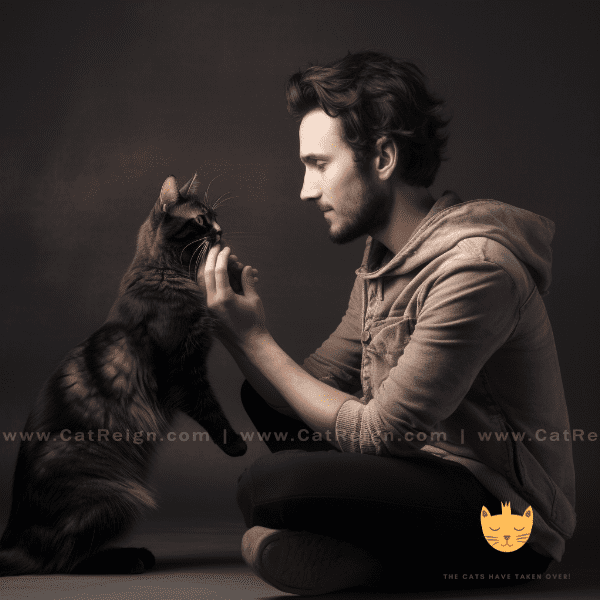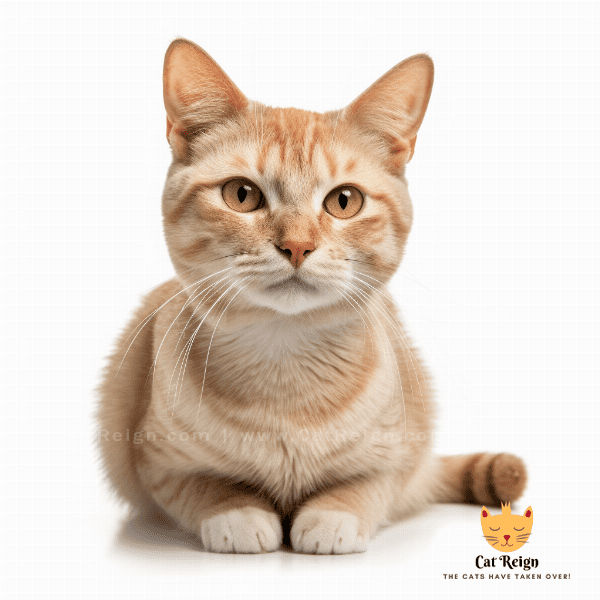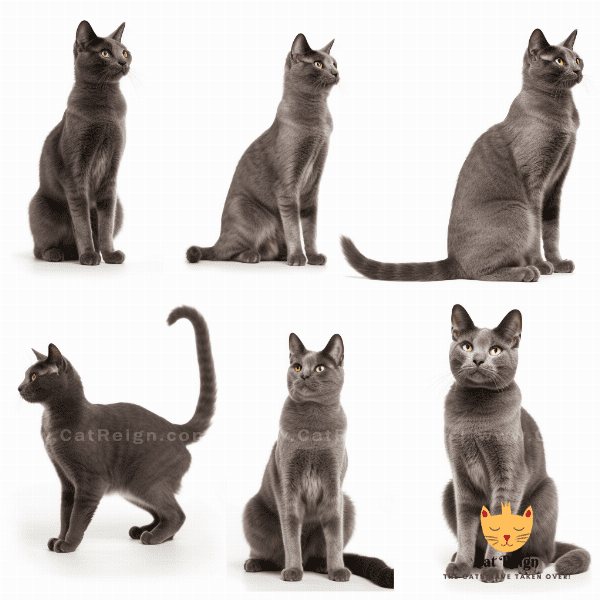Table of Contents
- The Basics of Cat Body Language
- Signs of Dominance in Cats
- Understanding Your Cat’s Posture
- The Importance of Tail Positioning
- Aggressive vs. Playful Behavior
- Vocal Cues in Dominant Cats
- Interpreting Facial Expressions
- Strategies for Dealing with Dominant Cats
- Addressing Behavioral Issues in Dominant Cats
- Building Trust with Your Cat through Body Language
The Basics of Cat Body Language
Understanding your cat’s body language is key to building a strong bond with your feline companion. By recognizing the subtle cues and signals that your cat uses to communicate, you can better understand their needs and emotions.
Paying Attention to Posture
Cats use their posture to convey a wide range of emotions. When your cat is feeling confident and relaxed, they will typically hold their head high and maintain an upright posture. On the other hand, if your cat is feeling scared or threatened, they may crouch down and try to make themselves appear smaller.
Reading Tail Positioning
The position of your cat’s tail is another important indicator of their mood. A tail that is held high indicates happiness and confidence, while a low-hanging tail may be a sign of fear or uncertainty. Pay attention to the movement of your cat’s tail as well – a twitching or thrashing tail may be a sign of agitation or aggression.
Understanding Eye Contact
Cats use eye contact to communicate with their owners and other animals. If your cat is staring directly at you with wide eyes, it may be a sign of excitement or anticipation. However, if your cat is avoiding eye contact or squinting, they may be feeling nervous or uneasy.
Listening to Vocalizations
While cats are known for their quiet and independent nature, they do use vocalizations to communicate with their owners. Pay attention to the pitch, tone, and volume of your cat’s meows, purrs, and growls. A high-pitched meow may be a sign of excitement or happiness, while a deep growl may indicate aggression or fear.
By understanding the basics of Cat body language, you can deepen your connection with your furry friend and provide them with the love and care they need to thrive.
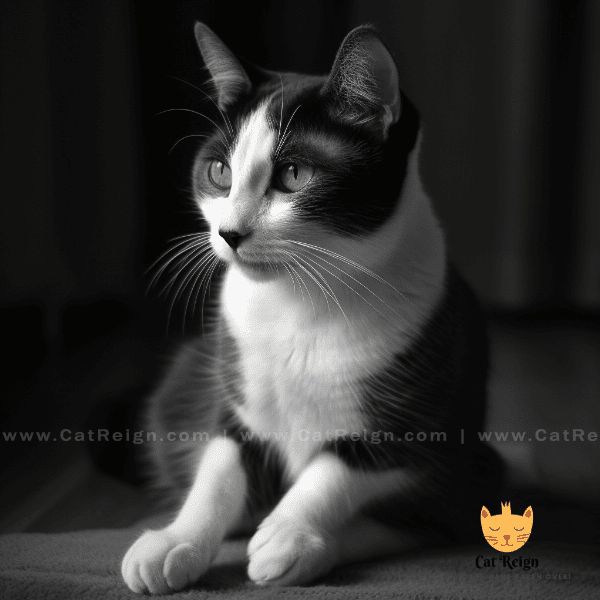
Signs of Dominance in Cats
Cats are natural predators and are wired to assert their dominance in certain situations. While dominance is a normal behavior for cats, it can be challenging for pet owners to manage. Here are some common signs of dominance in cats to watch out for:
Refusing to Obey Commands
One of the most obvious signs of dominance in cats is when they refuse to obey your commands. If your cat is ignoring your requests or engaging in unwanted behaviors, such as scratching furniture or jumping on counters, they may be asserting their dominance.
Pushing Other Cats or Pets Aside
Dominant cats often push other cats or pets aside to get what they want. If your cat is constantly pushing your other pets out of the way to get to their food or toys, it may be a sign of dominant behavior.
Guarding Resources
Cats can be possessive of their resources, including food, toys, and sleeping spots. If your cat is growling or hissing when you approach their food bowl or favorite toy, it may be a sign that they are guarding their resources as a way to assert their dominance.
Using Aggressive Body Language
Dominant cats may use aggressive body language to communicate their dominance to other animals and humans. This can include arching their back, puffing up their fur, and hissing or growling.
Asserting Dominance through Play
Cats often play-fight with each other as a way to assert dominance. If your cat is play-fighting with you or other pets, pay attention to their body language. If they are using aggressive tactics, such as biting or scratching, it may be a sign of dominant behavior.
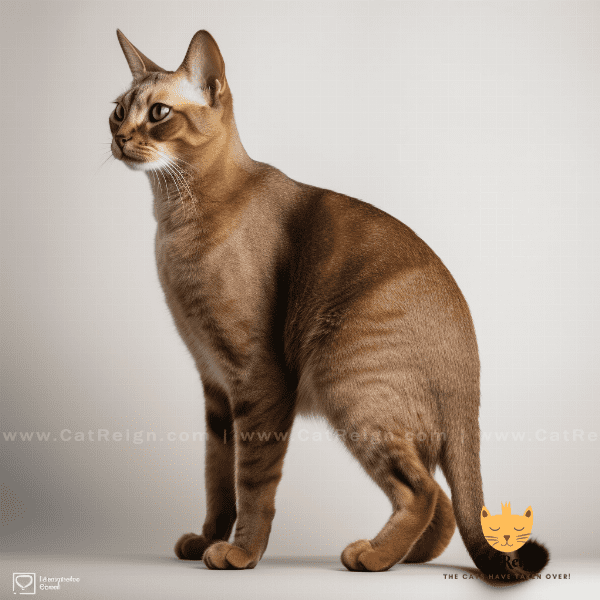
Understanding Your Cat’s Posture
Relaxed Posture
A relaxed cat will have a loose and comfortable body posture, with their head held high and their ears pointing forward. Their tail will often be held straight up or in a slight curve, and their eyes will be relaxed and half-closed.
Defensive Posture
When a cat feels threatened or scared, they may adopt a defensive posture. This can include crouching down with their tail tucked between their legs, their ears flattened against their head, and their eyes wide open.
Aggressive Posture
If a cat is feeling aggressive, they may puff up their fur, arch their back, and hold their tail upright or even puff it out. Their ears may be pointed forward or flattened against their head, and their eyes may be dilated.
Submissive Posture
A submissive cat will often cower down and try to make themselves appear smaller. Their ears will be flattened against their head, and their tail may be tucked between their legs or held low. They may avoid eye contact or even roll onto their back to expose their belly.
Playful Posture
When a cat is feeling playful, they may adopt a more active and engaged posture. They may crouch down low, wiggle their tail, and stare intently at their target.

The Importance of Tail Positioning
High Tail Position
A high tail position is a sign of a happy and confident cat. When a cat holds their tail straight up in the air or with a slight curve, it indicates that they are feeling relaxed and content.
Low Tail Position
A low tail position can indicate a range of emotions, from fear and anxiety to aggression and frustration. When a cat’s tail is held low, it can indicate that they are feeling uncertain or threatened.
Puffed Up Tail
A puffed up tail is a sign of a cat that is feeling threatened or agitated. When a cat feels threatened, they will often puff up their fur and arch their back, making themselves appear larger and more intimidating.
Swishing Tail
When a cat’s tail is swishing back and forth rapidly, it can be a sign of agitation or frustration. This can happen when a cat is feeling trapped or cornered, or when they are trying to communicate that they are not in the mood to play.
Twitching Tail
A twitching tail can indicate that a cat is feeling excited or alert. This can happen when a cat is hunting prey, or when they are about to pounce on a toy or playmate.
Understanding the importance of tail positioning is essential for cat owners. By paying attention to your cat’s tail, you can better understand their mood and behavior and respond accordingly. If your cat is exhibiting unusual tail behavior, it may be a sign of an underlying health issue, and you should consult with a veterinarian.
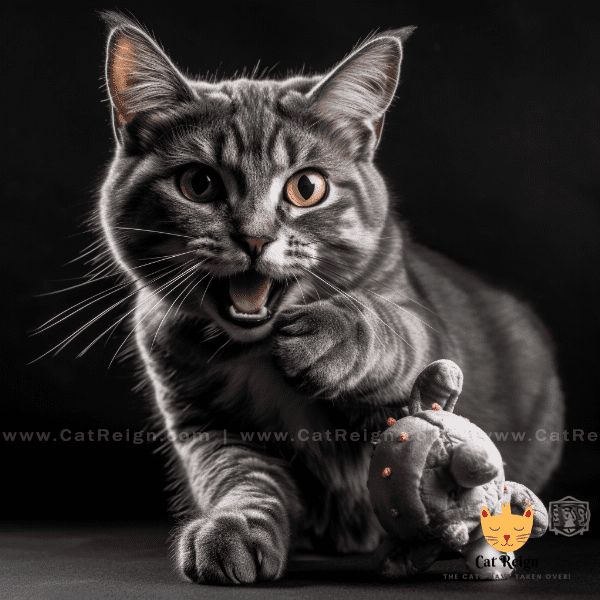
Aggressive vs. Playful Behavior
It can be difficult for cat owners to distinguish between aggressive and playful behavior, as both can involve biting, scratching, and other physical interactions. However, it’s important to understand the difference, as aggressive behavior can be harmful and should be addressed immediately.
Signs of Playful Behavior
When a cat is feeling playful, they will often engage in physical interactions with their owners or other pets. Playful behavior can include biting, scratching, and wrestling, but it should be relatively gentle and not result in any injury. A cat that is playing will typically have relaxed body language and may even purr or meow during play.
Signs of Aggressive Behavior
Aggressive behavior in cats is more serious and can result in injury to humans or other pets. Signs of aggression include hissing, growling, and arching their back. Aggressive cats may also have their ears flattened against their head and their fur puffed up. If a cat is exhibiting these behaviors, it’s important to give them space and avoid physical interactions until their behavior improves.
Addressing Aggressive Behavior
If your cat is exhibiting aggressive behavior, it’s important to address the issue as soon as possible. Start by identifying the cause of the behavior – is your cat feeling threatened, territorial, or stressed? Once you’ve identified the underlying cause, you can work on addressing the issue and helping your cat feel more comfortable and relaxed. This may involve providing them with a safe space, reducing stress in the environment, and seeking the help of a professional if necessary.
Understanding the difference between playful and aggressive behavior is essential for cat owners. By paying attention to your cat’s body language and behavior, you can better respond to their needs and build a stronger bond with your furry friend.
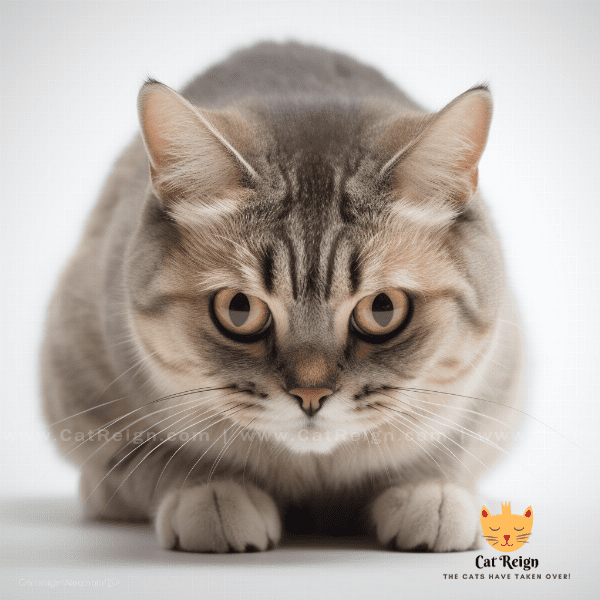
Vocal Cues in Dominant Cats
While cats are known for their quiet and independent nature, they do use vocalizations to communicate with their owners and assert their dominance. Here are some common vocal cues in dominant cats to watch out for:
Loud Meowing
Dominant cats may use loud and persistent meowing to get what they want. This can include meowing for food, attention, or to be let outside. If your cat is meowing excessively, it may be a sign that they are trying to assert their dominance over you.
Purring
While purring is often associated with contentment and happiness, it can also be a sign of dominance in cats. Dominant cats may purr as a way to assert their dominance over other animals in the household or to signal their contentment with a particular situation.
Chattering
When a cat is chattering their teeth, it can be a sign of excitement or frustration. This can happen when a cat is watching birds or other prey outside, or when they are feeling playful and want to engage in a physical interaction with their owner.
Yowling
When a cat is feeling stressed or anxious, they may yowl loudly as a way to express their distress. This can be a sign of dominant behavior if the cat is trying to assert their authority over other animals in the household.
Understanding vocal cues in dominant cats is important for pet owners. If your cat is exhibiting dominant behavior through vocalizations, it’s important to establish yourself as the alpha and set boundaries to ensure a healthy and happy relationship with your feline companion.
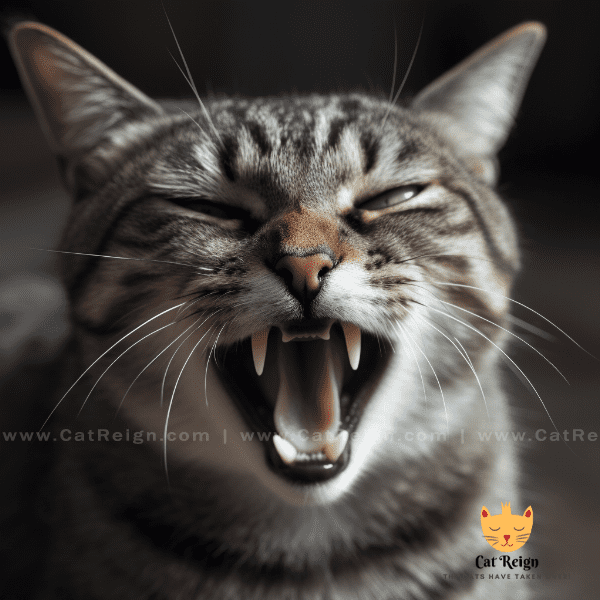
Interpreting Facial Expressions
Cats use their faces to communicate a wide range of emotions and behaviors. By paying attention to your cat’s facial expressions, you can better understand their mood and behavior.
Dilated Pupils
When a cat’s pupils are dilated, it can be a sign of excitement or fear. If your cat is staring intently at something with dilated pupils, it may be a sign that they are feeling curious or interested. However, if their pupils are dilated in a low-light environment or during a stressful situation, it may be a sign of fear or anxiety.
Relaxed Eyes
Relaxed eyes in cats are characterized by half-closed lids, indicating that the cat is feeling content and relaxed. A cat with relaxed eyes may even appear sleepy, as they are in a state of relaxation.
Staring
When a cat is staring directly at something or someone, it can be a sign of interest or aggression. If your cat is staring at you or another animal in the household with a fixed gaze, it may be a sign of dominance or a desire to play.
Flattened Ears
When a cat’s ears are flattened against their head, it can be a sign of fear or aggression. Flattened ears indicate that the cat is feeling threatened or anxious and may be preparing to defend themselves.
Mouth Positioning
Cats use their mouths to communicate a wide range of emotions. A relaxed and slightly open mouth can indicate that the cat is feeling content, while a tightly closed mouth can be a sign of fear or aggression.
Understanding your cat’s facial expressions is an important aspect of communicating with them. By paying attention to their body language, you can better understand their needs and emotions and build a stronger bond with your furry friend.

Strategies for Dealing with Dominant Cats
Establishing Boundaries
Setting boundaries is essential when dealing with a dominant cat. This can include establishing rules around feeding times, playtime, and physical interactions. By setting clear boundaries, you can help your cat understand that you are in charge and that certain behaviors are not acceptable.
Providing a Safe Space
Providing your cat with a safe space can help them feel more relaxed and reduce their aggressive or dominant behavior. This can include setting up a separate room with a comfortable bed, food, and water, or providing them with a cozy hiding spot in the house.
Reducing Stress in the Environment
Stressful environments can exacerbate dominant behavior in cats. To reduce stress in your home, consider providing your cat with a scratching post or toys to play with. You can also create a routine for feeding and playtime to help your cat feel more secure.
Consistent Training and Positive Reinforcement
Consistent training and positive reinforcement are important when dealing with a dominant cat. This can include using treats to reward good behavior, or training your cat to respond to certain commands or cues.
.
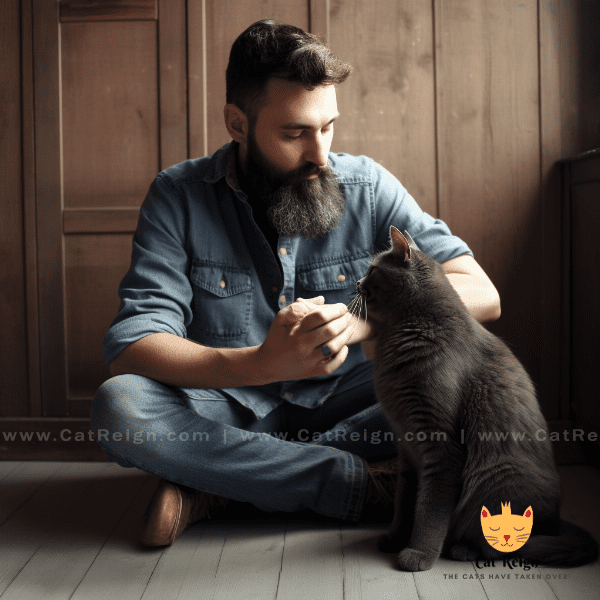
Addressing Behavioral Issues in Dominant Cats
Behavioral issues in dominant cats can be challenging for pet owners to address. However, with the right approach, it’s possible to manage these issues and ensure a healthy and happy relationship with your furry friend.
Identifying the Underlying Cause
The first step in addressing behavioral issues in dominant cats is to identify the underlying cause. This can include fear, anxiety, stress, or a desire for attention or dominance. Once you understand the root cause of your cat’s behavior, you can begin to address the issue.
Establishing Yourself as the Alpha
Establishing yourself as the alpha is essential when dealing with a dominant cat. This can include setting boundaries and rules around feeding times, playtime, and physical interactions. Consistent training and positive reinforcement can also help establish your authority and reinforce positive behavior.
Providing a Stimulating Environment
Providing your cat with a stimulating environment can help reduce behavioral issues in dominant cats. This can include providing toys to play with, scratching posts, and climbing structures. Outdoor access or a window with a view can also help reduce boredom and anxiety in your cat.
Using Positive Reinforcement
Positive reinforcement is a powerful tool when addressing behavioral issues in dominant cats. This can include using treats to reward good behavior, or training your cat to respond to certain commands or cues. Positive reinforcement helps reinforce positive behavior and can help reduce negative behavior in your cat.
Seeking Professional Help
If your cat’s behavioral issues are persistent and severe, it may be necessary to seek professional help. A veterinarian or animal behaviorist can provide guidance and advice on how to manage your cat’s behavior and ensure a healthy and happy relationship with your furry friend.
Addressing behavioral issues in dominant cats can be challenging, but with the right approach, it’s possible to manage these issues and establish a positive and healthy relationship with your feline companion. Remember to always approach your cat with love and patience, and seek help if necessary.
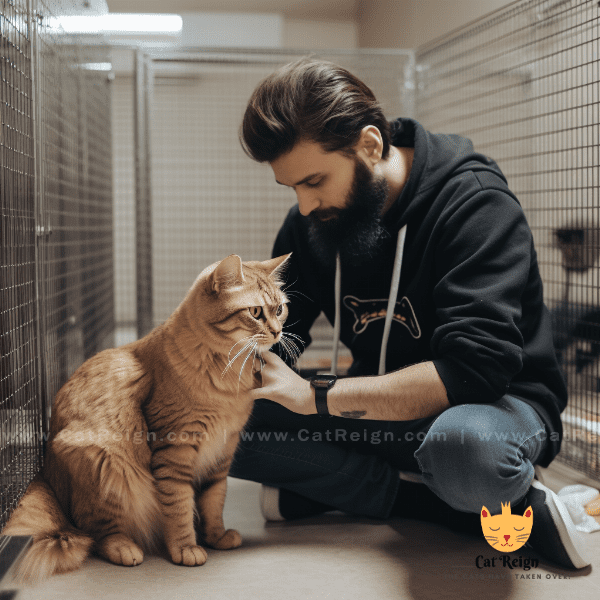
Building Trust with Your Cat through Body Language
Body language plays a crucial role in building trust and a strong bond with your cat. By understanding and using positive body language, you can communicate effectively with your feline companion and build a lasting relationship based on trust and mutual respect.
Slow Blinking
Slow blinking is a sign of relaxation and trust in cats. When your cat slow blinks at you, it’s a sign that they feel comfortable and safe around you. You can reciprocate this by slow blinking back at your cat, which can help build trust and strengthen your bond.
Avoiding Direct Eye Contact
Direct eye contact can be seen as a sign of aggression or dominance in cats. To build trust with your cat, avoid direct eye contact and instead focus on slow blinking and using positive body language.
Letting Your Cat Come to You
Letting your cat come to you is a sign of respect and trust. This allows your cat to approach you on their own terms and become more comfortable with you. Avoid forcing your cat to interact with you, as this can be seen as a sign of aggression.
Using Gentle Touches
Gentle touches are a sign of affection and trust in cats. When petting your cat, use gentle strokes and avoid petting too aggressively. This helps your cat feel more relaxed and comfortable around you.
Building trust with your cat through body language takes time and patience, but with the right approach, you can establish a strong and lasting relationship with your feline companion. Remember to always approach your cat with love and respect, and to let them set the pace for building trust and a strong bond.
